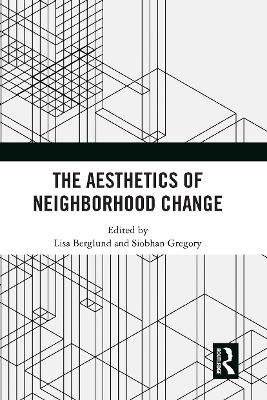
The Aesthetics of Neighborhood Change
Routledge (Verlag)
978-1-032-83915-8 (ISBN)
The Aesthetics of Neighborhood Change explores cultural shifts that result from gentrification and redevelopment, showing how cultures of racially and economically marginalized groups are appropriated or erased by the introduction luxury real estate and retail branding.
The book explores the literal and symbolic shifts in ownership that are happening in urban locations undergoing redevelopment and demographic shifts. As lesser discussed manifestations of these shifts, cultural symbols of leisure, tourism and elite consumption can be witnessed as cities work to reshape their landscapes through real estate, retail, and public space development. Aesthetic changes often show up in the form of boutique coffee shops, distilleries, high-end restaurants, retail flagships, and more. Through careful branding and visual design, the new spaces and places become recognized as signs of exclusivity. This exclusivity also emerges in public spaces through local, informal retail practices like street vending, food trucks and outdoor markets. As these changes take shape, more affluent groups replace and displace the cultural practices of existing groups. These changes send tangible, observable messages of neighborhood change which signal the race and class profiles of the desired incoming population who can afford to participate in the redeveloped landscape.
Developing a discourse on how to better observe and analyze signs of exclusion in the built environment, The Aesthetics of Neighborhood Change will be of great interest to scholars of community development, social mobilization, urban studies and design, and urban planning and development. The chapters were originally published as a special issue of the Journal of Cultural Geography.
Lisa Berglund is a professor in the School of Planning at Dalhousie University. Her research focuses on community development and social mobilization in the context of neighbourhood change, exploring the ways that marginalized communities fight for inclusion in urban planning and development. Siobhan Gregory is a senior lecturer of industrial design and design anthropology in the James Pearson Duffy Department of Art and Art History at Wayne State University. Her research and creative practice focus on the progress of human-centered design for the social sector. She writes about how design and designers play a role in the gentrification process.
1. Introduction: the aesthetics of neighborhood change Lisa Berglund and Siobhan Gregory 2. A focus on needs: toward a more nuanced understanding of inequality and urban informality in the global North Ryan Thomas Devlin 3. Excluded by design: informality versus tactical urbanism in the redevelopment of Detroit neighborhoods Lisa Berglund 4. Authenticity and luxury branding in a renewing Detroit landscape Siobhan Gregory 5. Deracialized Nostalgia, reracialized community, and truncated gentrification: capital and cultural flows in Richmond, Virginia and Durban, South Africa Patrick Bond and Laura Browder
| Erscheinungsdatum | 16.08.2024 |
|---|---|
| Verlagsort | London |
| Sprache | englisch |
| Maße | 156 x 234 mm |
| Gewicht | 217 g |
| Themenwelt | Naturwissenschaften ► Geowissenschaften ► Geografie / Kartografie |
| Technik ► Architektur | |
| ISBN-10 | 1-032-83915-5 / 1032839155 |
| ISBN-13 | 978-1-032-83915-8 / 9781032839158 |
| Zustand | Neuware |
| Informationen gemäß Produktsicherheitsverordnung (GPSR) | |
| Haben Sie eine Frage zum Produkt? |
aus dem Bereich


